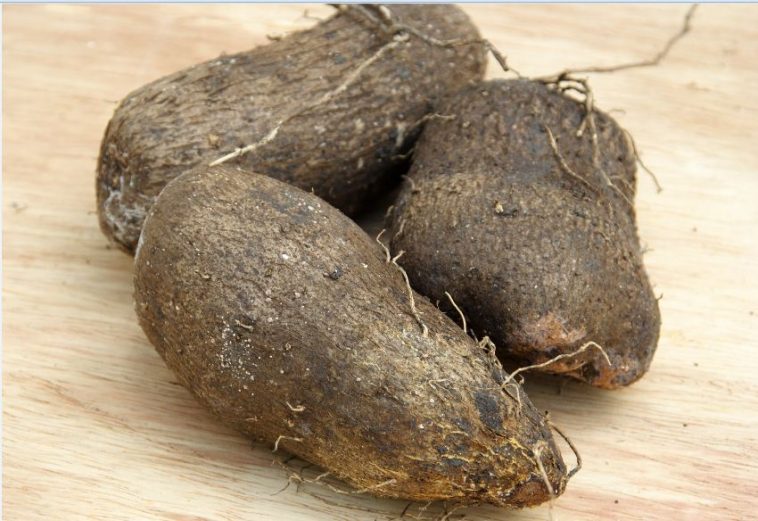Water yam, also known as “white yam” or “tropical yam,” is a type of yam plant (Dioscorea alata) primarily grown in tropical regions. It’s a starchy tuberous root vegetable widely cultivated for its edible underground tubers. The tubers can vary in size and shape, often elongated and cylindrical, with a rough, brown outer skin and white flesh inside.

Water yam is a staple food in many parts of Africa, Asia, and the Pacific Islands. It’s versatile in cooking and can be boiled, roasted, fried, or mashed, similar to other yams.
It’s a good source of carbohydrates, dietary fiber, and vitamins and minerals.
In terms of cultivation, water yams require a warm, tropical climate and well-drained soil. They are typically propagated by planting small sections of the tuber or by using vine cuttings. While they are a valuable food source, water yams can be challenging to cultivate due to susceptibility to pests and diseases.
What is the Benefit of Water Yam?

Water yam, also known as “Dioscorea alata,” is a tuberous root vegetable that offers plenty of potential benefits:
1. Nutritional Value
Water yam is rich in essential nutrients such as carbohydrates, dietary fiber, vitamins (especially vitamin C and B-complex vitamins), and minerals (including potassium, manganese, and magnesium). These nutrients are vital for overall health and well-being.
2. Digestive Health
The dietary fiber content of water yam can aid digestion and promote regular bowel movements, thus potentially reducing the risk of constipation and other digestive issues.
3. Weight Management
Due to its high fiber content and relatively low calorie count, water yam can contribute to a feeling of fullness and satiety, which may help in weight management and preventing overeating.
4. Blood Sugar Regulation
Water yam has a lower glycemic index compared to some other starchy foods, which means it can help regulate blood sugar levels and may be suitable for individuals with diabetes when consumed in moderation.
5. Heart Health
Potassium, present in water yam, is essential for maintaining healthy blood pressure levels. Additionally, the dietary fiber and antioxidants in water yam may contribute to heart health by reducing the risk of cardiovascular diseases.
6. Antioxidant Properties
Water yam contains various antioxidants, including vitamin C, which can help neutralize harmful free radicals in the body, thereby reducing oxidative stress and lowering the risk of chronic diseases.
7. Immune Support
The vitamin C content in water yam is beneficial for supporting the immune system, as it plays a crucial role in strengthening the body’s defense against infections and illnesses.
8. Versatility in Cooking
Water yam is a versatile ingredient that can be prepared in various ways, including boiling, steaming, frying, or baking. It can be used in soups, stews, curries, salads, or as a side dish, providing culinary diversity and flavor to meals.
In general, incorporating water yam into a balanced diet can contribute to overall health and well-being, providing essential nutrients and potential health benefits.
However, individual dietary needs and health conditions should always be considered when adding new foods to one’s diet.
What is the Difference Between Yam and Eater Yam?

Yams and water yams are both tuberous root vegetables, but they belong to different botanical families and possess distinct characteristics. Yams, scientifically known as Dioscorea species, are starchy tubers native to Africa and Asia, featuring a rough, brown exterior and white, purple, or yellow flesh.
They are widely cultivated for their culinary versatility and nutritional value. On the other hand, water yams, belonging to the Dioscorea alata species, are a type of yam primarily found in tropical regions like Asia and the Pacific Islands.
Water yams have a smoother, lighter-colored skin and a moist, mucilaginous texture compared to traditional yams. While both varieties share similarities in their culinary uses, such as being boiled, fried, or mashed, their differences in appearance, texture, and botanical classification set them apart.


Leave a Reply